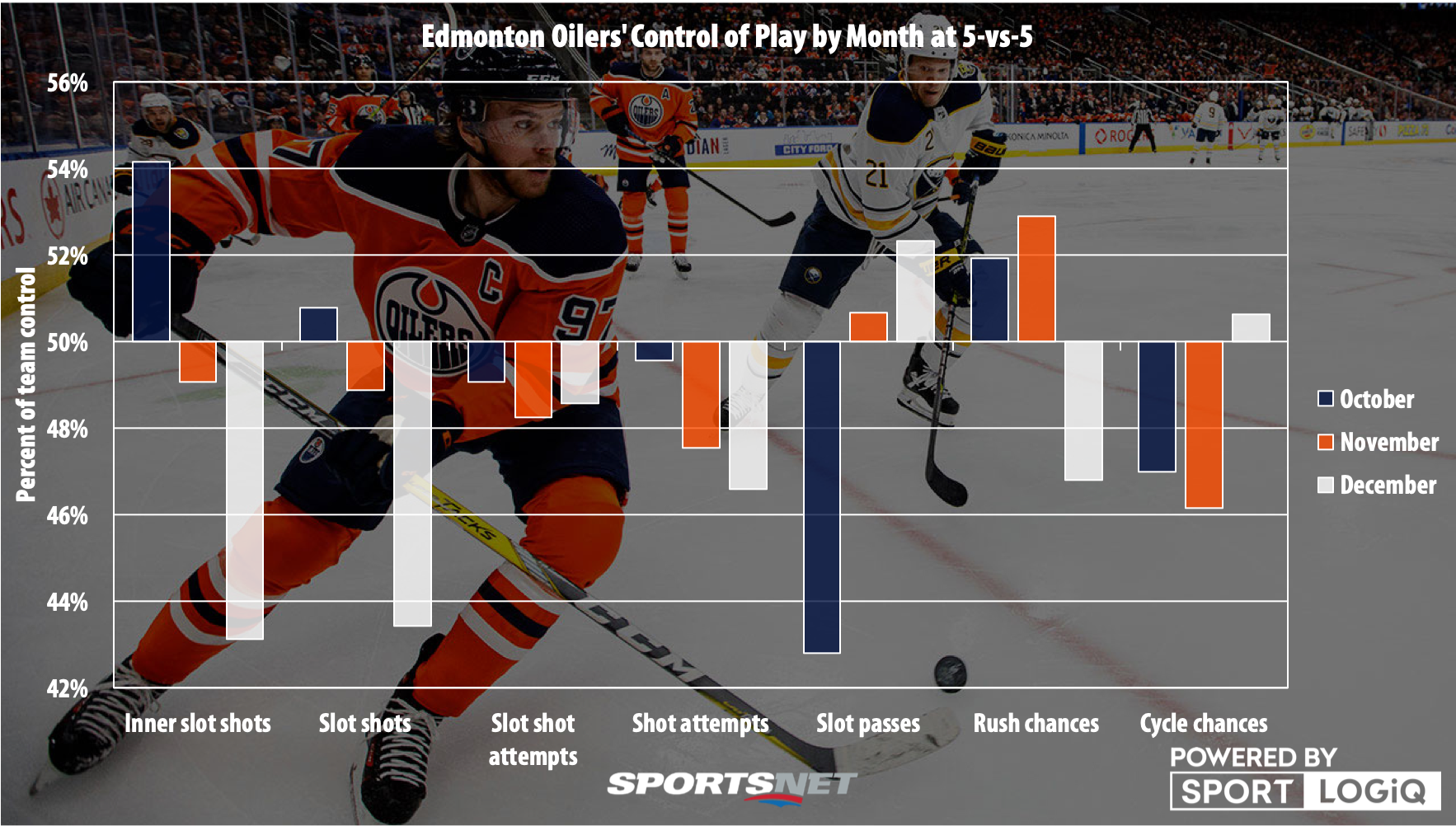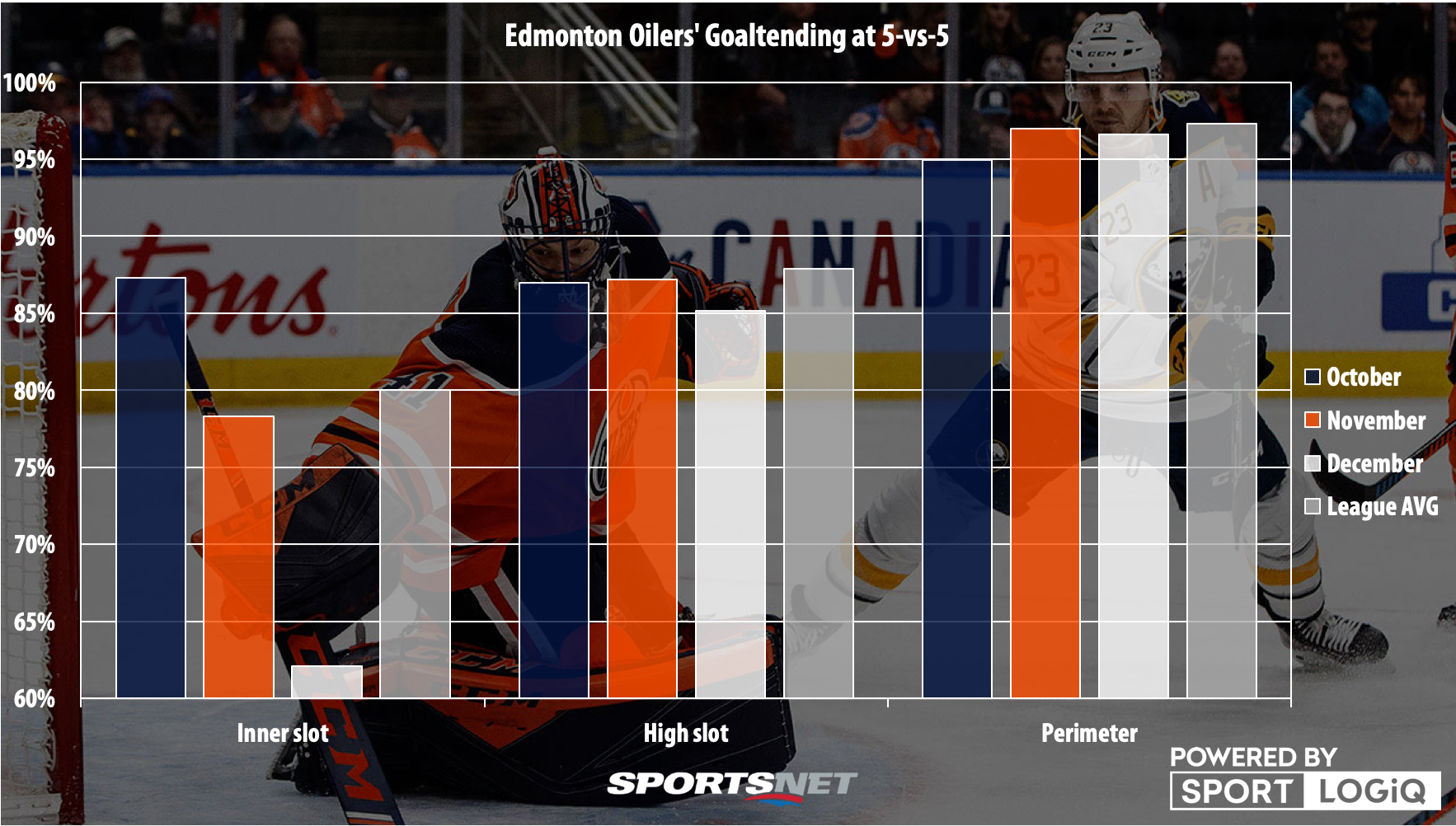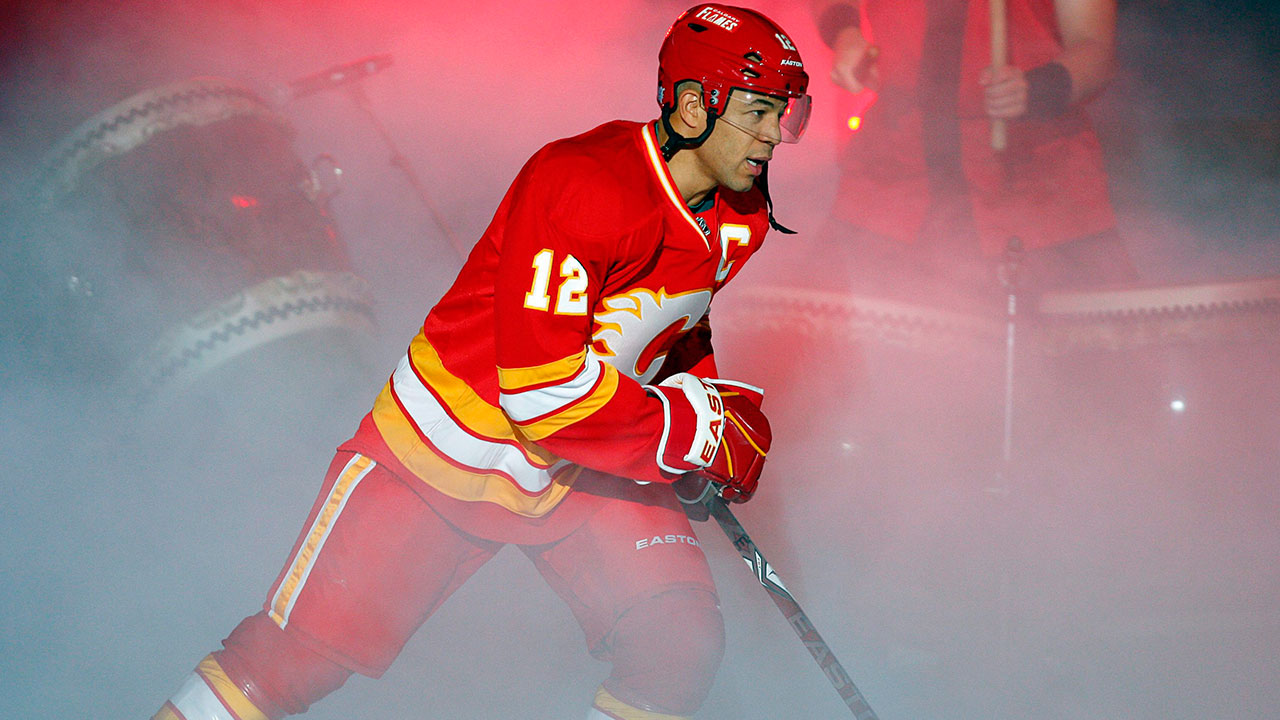The Edmonton Oilers are still hanging on to playoff positioning — sitting second in the Pacific Division at the moment — but even if the wheels haven’t fallen off the bus yet, the lug nuts are stripped and a few have broken free. It was a wobbly ride to begin with, since the Oilers were essentially a ramshackle group hoping that heavy minutes for Connor McDavid and Leon Draisaitl could carry them through, but it worked for a bit.
Starting off the season as a relatively low-event team that was able to overcome their thin positive margins, the Oilers have seen those margins increasingly shift into negative territory in a variety of categories as the season has drawn on.
After starting the season 13-6-2 through to the middle of November, the Oilers have dropped to 5-6-2 since then, the 27th-best record in the NHL over that time.
Looking at things month-by-month, things look even worse than the nearly .500 record they’ve posted, especially at even strength.

Strangely, each month of the season the Oilers have improved their control of slot passes at 5-vs-5, but they’ve had serious issues turning those completed passes into shots on goal. The strong advantage they had in inner slot shots in October has gradually fallen into deeply negative territory, as have shots from the slot overall.
The same trend exists in a less extreme fashion for shot attempts, both from the slot and overall, and while the Oilers have managed to maintain an advantage off the rush generally and even improved in November, they have seen fewer chances themselves while allowing significantly more in December.
Curiously, the opposite has happened with cycle chances, with the Oilers doing a decent job of cutting down passes through the middle in their own zone. But that improvement hasn’t been enough to compensate for other areas of deficit.
As much as the Oilers’ play has degraded at even strength, that’s not the biggest story behind Edmonton’s struggles — for that we need to move on from the skaters and stare directly at the net.
Early in the season, Mikko Koskinen in particular was absolutely dynamite from the inner slot, rarely allowing the few dangerous shots that the Oilers were permitting to squeak through. But how long was that going to last? Not long enough.

The Oilers’ goaltenders have been below league average from the perimeter and the high slot all season long, meaning that the Oilers have been slightly more prone to giving up weak goals than the average team, but in October that wasn’t a big deal since Koskinen and Mike Smith were stopping the most dangerous shots at a rate seven per cent higher than the league average.
Unfortunately for Edmonton, that level of play only lasted a short time, with their goaltenders regressing to about league average — and just under league average in November — which isn’t so bad. At the very least, it’s survivable to have goaltenders who are slightly below average, but December has been a horror show.
Koskinen has had two blow up games in his last three starts, but has played well in his two other games in December. Mike Smith has managed just one start with a save percentage above 87 per cent in his last six appearances, and just two in his last nine. That wouldn’t even be good in the 1980s, let alone now.
Both goalies have been lit up from the inner slot, an area the Oilers are allowing an increasing number of shots from, which is a deadly combination.
The good news for the Oilers is that there is a relatively easy partial solution to this — there is no reason in the world for Smith and Koskinen to be sharing the net equally. Koskinen has been superior to Smith for two seasons now, and while Smith can have runs where he’s brilliant, those moments are becoming increasingly few and far between.
Koskinen, on the other hand, has been serviceable at the least, which the Oilers need on a nightly basis. If Smith goes on a hot streak, it makes sense to throw him a few extra starts, but he is a 37-year-old veteran, not a rookie you’re trying to develop by giving him more reps.
Also fortunate for the Oilers is that banked points don’t go away no matter how poorly you play, and those make it much easier to weather tough streaks — just ask the Montreal Canadiens, who are still in the playoff picture despite losing eight-straight.
Ultimately, if this Oilers team is able to recover and keep their spot in the standings, it will likely be due to a season-long battle of their star players attempting to compensate for their lack of depth. At no point was this going to be easy, but they don’t need to make it harder on themselves by playing their worst players when they don’t need to.
[relatedlinks]







